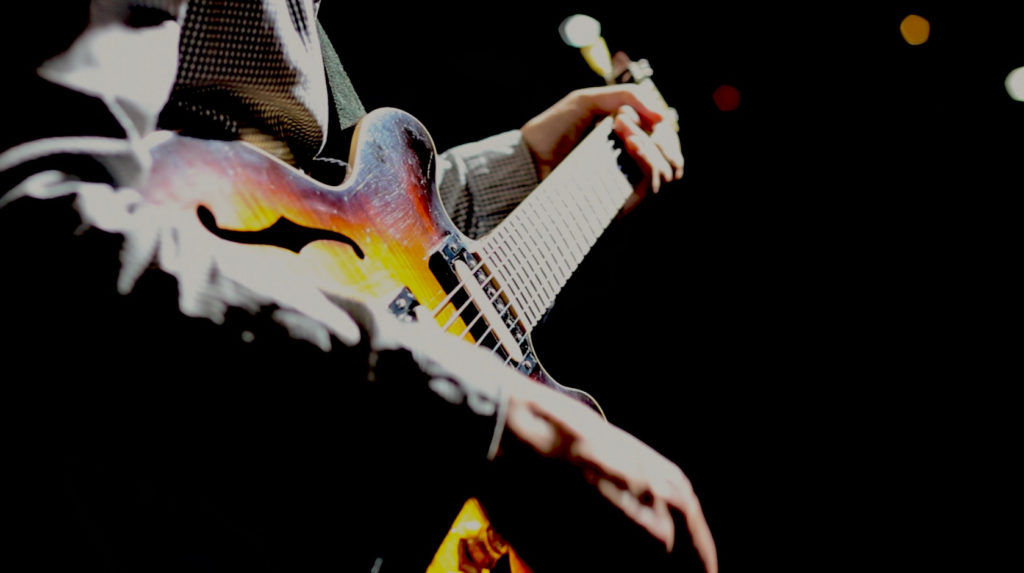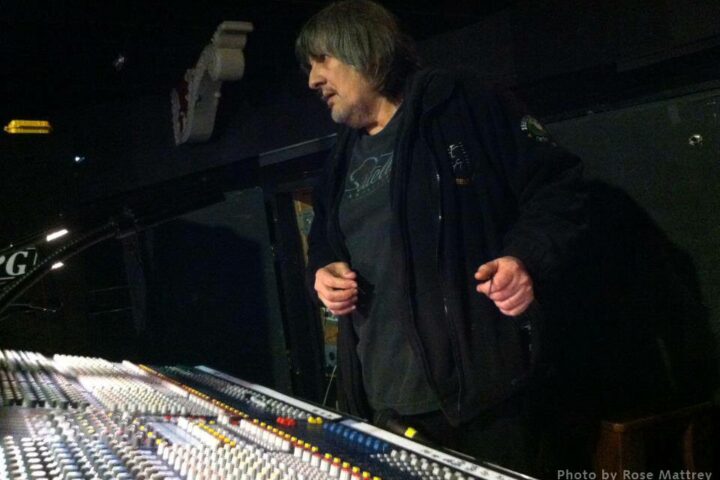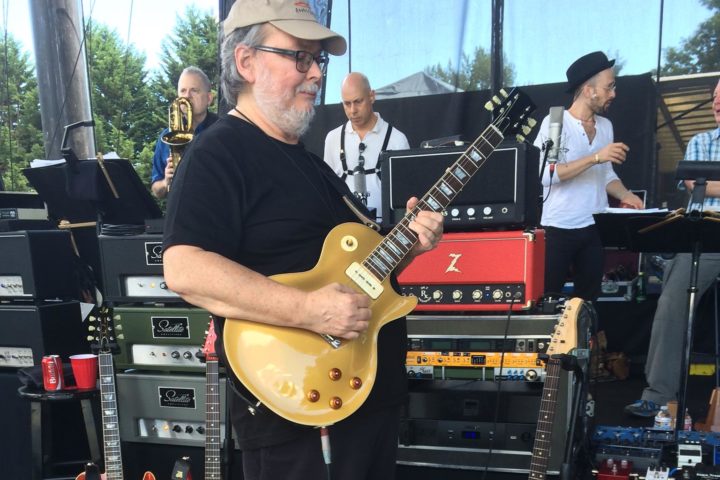For the last decade or so, Jon Herington has been playing alongside Donald Fagan and Walter Becker at Steely Dan tour stops. Night after night, he’s performing some of the most complicated arrangements ever crafted for pop music, playing parts originally forged into our memories by guitar legends such as Jeff “Skunk” Baxter and Larry Carlton. Yet, as anyone who has caught Steely Dan recently can attest, Herington is living up to this monumental task. The NYC-based musician, who also plays alongside Madeleine Peyroux and has his own solo career, made time to talk to the Fretboard Journal before his recent Seattle tour date.

Fretboard Journal: How did you get the Steely Dan gig?
Jon Herington: I was asked to do some overdubs on Two Against Nature, which was the first Steely Dan record in this more recent phase of recording. I think it had been about 18 years since they had done Gaucho. It was toward the end of the overdub stage that I got a call.
I did maybe four or five sessions and played on, I think, four tunes for that record. Somewhere in the course of the sessions they asked me if I was interested in going on tour. I said of course. So that was that.
FJ: Didn’t you tell me you had an excruciating story about your first Steely Dan song?
JH: Oh yeah. Walter [Becker] called me and I came in and played on “Janie Runaway.” We worked for about four or five hours and it seemed to go well. I was reasonably comfortable and they seemed happy with what I was doing; we just played the one tune over and over with a lot of takes, but it seemed to go well. At the end of the session they said goodbye and Walter asked, “Are you in town? Are you going to be around for a while? I’d like to have you come back in next week and play some more.” And I said, “Yeah, I’m around and I’d love to.”
A week goes by with no phone call. Two weeks go by, no phone call. Three weeks go by… So, I gave up on him, tried to recover and move on. Then, about five weeks after that, he did call. So maybe his sense of time is different from mine!
On the phone, he said, “Remember that tune you played on, a couple weeks ago?” I said, “Yeah, I remember.” He said, “Well, we’re not using anything you did from it.”
Then he said, “But we’d like you to come in and play on some other stuff.”
He was messing with me a bit, but he was right, they didn’t use anything that I played on that first tune. But I came in and I did survive. I did four other tunes, or so. And that was my introduction to Walter Becker.
FJ: Steely Dan must have one of the more obsessive fan bases around. And every night, you’re asked to play on these incredibly complex tunes that the fans have committed to memory, both note and tone-wise. How do you approach a gig like that?
JH: I certainly don’t try all the time to get the sounds that are on the records. For one, it would be really difficult to do. But I often will go for something sort of similar, just because it does seem like what the tune calls for, often. For instance, on “Peg,” it would probably sound a little odd not to use a sort of cranked up sound that has some sustain and distortion.
FJ: I was actually going to ask you about the “Peg” solo that you’re performing. Is it an alternative to the slide part on the record?
JH: The beginning of it? No, it’s not slide, he just bends two strings at once. It’s the two-finger bend. Not easy to do.
But you know, we’re also doing a tune called “Your Gold Teeth.” It’s kind of a jazzy tune and there’s some restraint about it. On the record, the sound is clearly a rhythm pickup, but I don’t know what kind of guitar it was or anything–it’s certainly a clean tone on the rhythm pickup. It sort of sounds like the right thing for that. It’s a bit jazzy, but not too much. I tend to sort of go with general sort of things like that.
Most of the solo sounds might be the stuff that Larry Carlton did. Almost inevitably, it’s a Gibson guitar and it’s often his 335. Jeff Baxter played a lot of different guitars, I think. But because Walter is playing Strats by [Roger] Sadowsky all night long, I probably use the Gibson more than the Tele. It’s a natural complement to his tones.
But there are some tunes where the Fender seems like the right thing because it was closer to what was on the record. I’m not that careful to figure out what guitar it was originally and duplicate the tones, but I certainly want it to sound like it fits with the song.
The other thing is that I have to be comfortable with the sound. If I’m not, it just doesn’t feel right and I can’t play well. So, sometimes I make a choice to go with the sound that frees me up to play in a looser way than to try to imitate what the sound is on record.
The challenge with this gig is to find a way to keep the level of quality of the playing–the soloing–up high, because the records are so great that way. Also, to make sure there’s room for me to do something that’s fresh and spontaneous and not feel locked in to repeating myself all the time. People know the guitar solos on the records better than I do sometimes.
That’s the great thing about the gig, because you can play with the audience’s expectations. You can’t do that on a gig if they don’t know the music, but if they’ve heard the records then they’ll be coming with a sort of understanding. You can give them what they’re expecting or not … you can tease them; you can play with them. You wouldn’t have that power in a gig if it weren’t well-known music or the audience didn’t know the stuff.
FJ: How much time were you given to study these tunes before going out on tour?
JH: The first time I went on the road, I think it was in 2000, it seemed like a really tall order to learn all these tunes. There were so many guitar solos! I remember talking to Donald [Fagen] about “Bodhisattva,” which I found very difficult to play–just difficult changes to play through and a style was a little strangely hybrid to me. I couldn’t find a natural, comfortable way to tackle it right away from the beginning.
So I said to Donald, “Don’t you thing that would make a great saxophone solo?” He just chuckled and walked away. But I was definitely overwhelmed; there was so much to learn. I like to be over-prepared and I definitely was not.
I remember one lesson I’ve learned: I think our first tour was in Japan and there were a lot of tunes on the list that we hadn’t done very many times. I had charts for those. But charts on these tunes … some of them were like five or six pages long!
So I got them all taped together and I didn’t want to use a music stand. I thought that would look a little silly. So, I have these charts on the floor by the pedal board.
On a lot of these tunes, I knew basically everything except for one little section. But this is a six-page chart, so I’m just kind of groovin’ along on the parts that I know and all of a sudden this section comes up and I realize I have no idea what’s coming next. So I’m down there searching, trying to find my page, because I wasn’t really paying attention for the parts I knew and I could never find the spot!
I learned my lesson at the one gig I played that way. I went home and made a promise to myself to not do that again. I just stayed up all night and studied and studied until I had everything memorized.
Since then, except for the occasional surprise tune, which they might call on the spur of the moment–which nobody knows–basically no more charts for me.
FJ: You have both an enviable and scary job!
JH: That’s true. But they’re so cool to work for and they’re so easy to work for. It’s a great band; there are no weak links in this chain.


